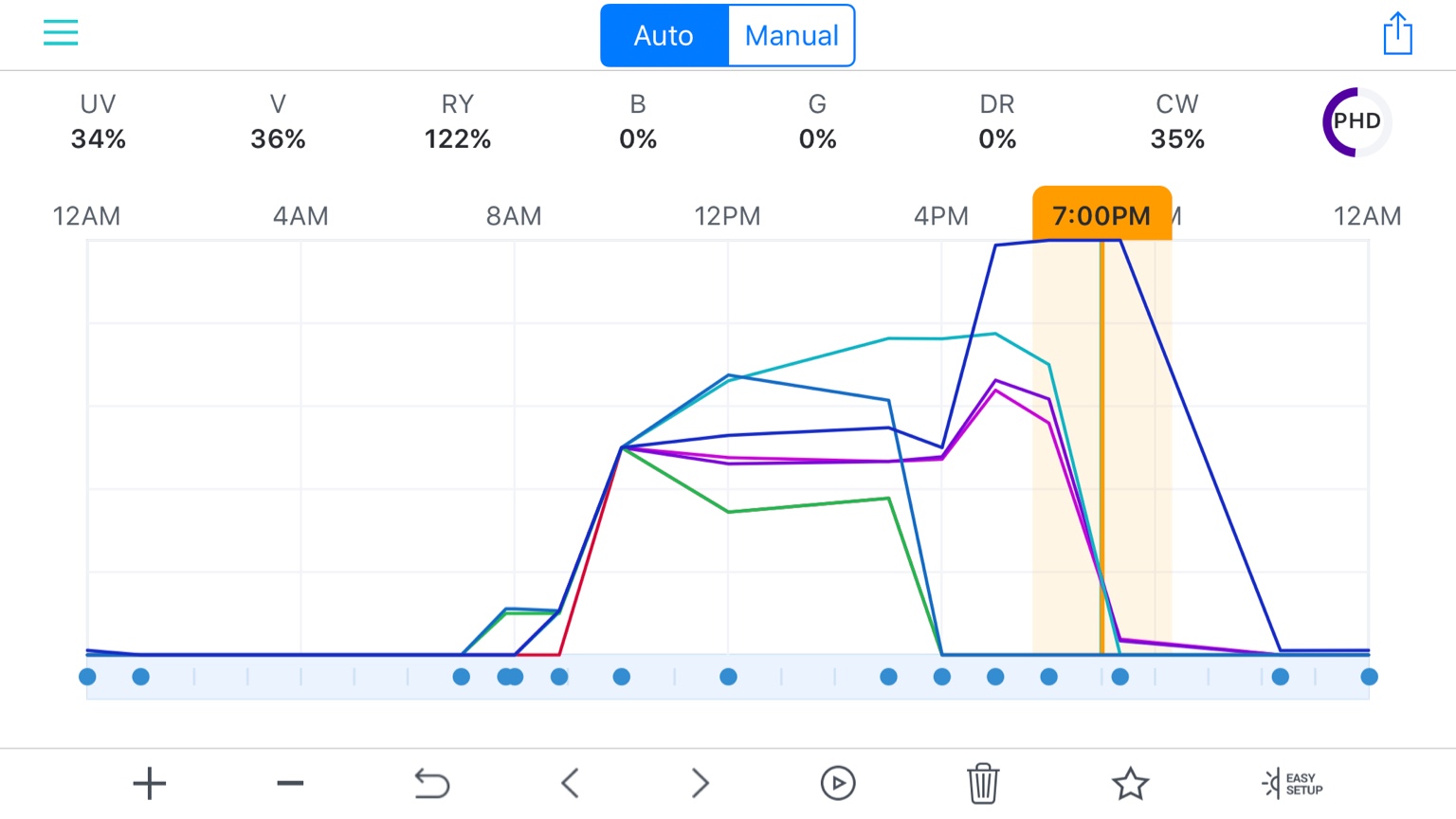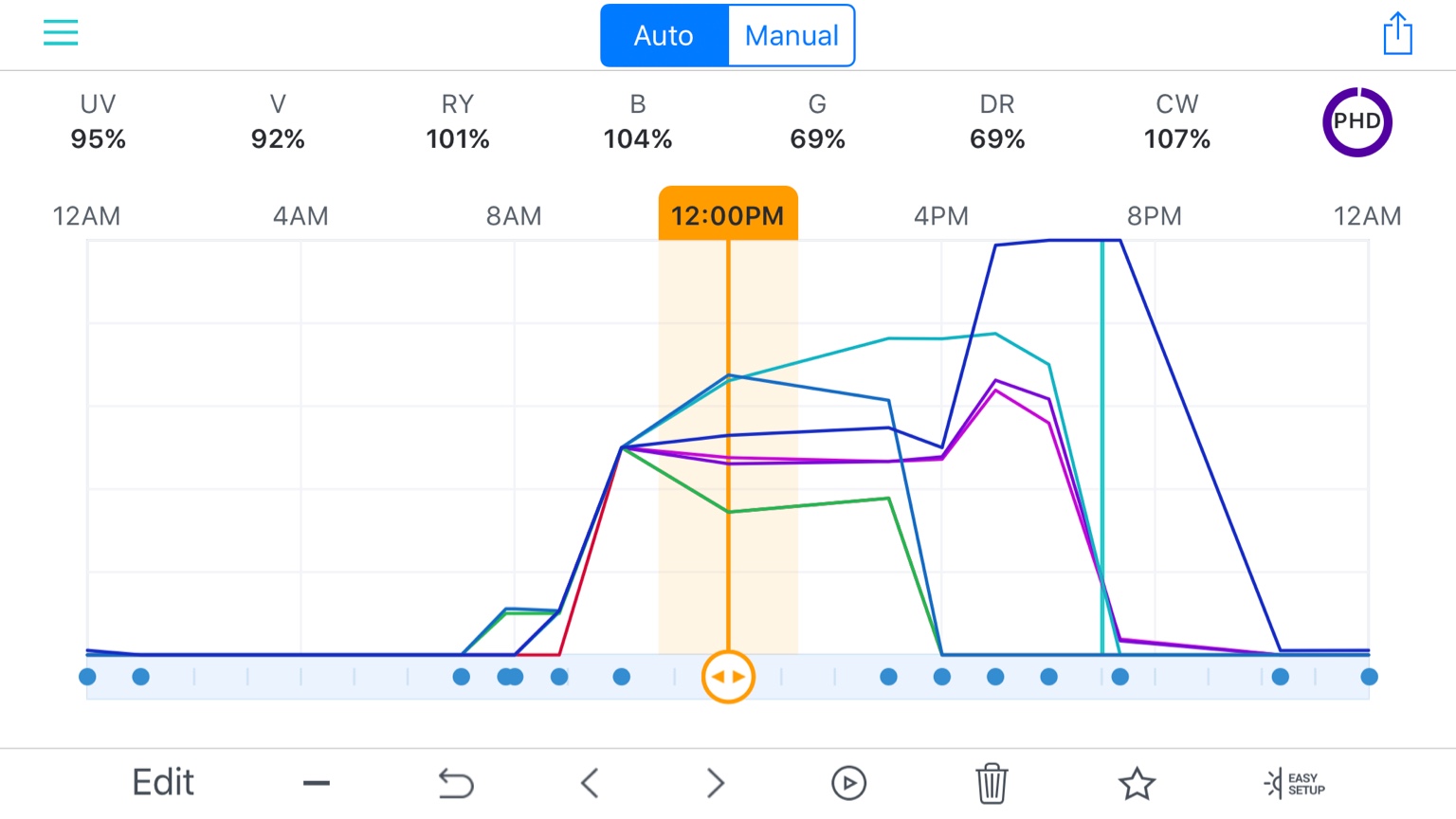One of the coolest and toughest part about LED's is the controllability with the intensity and spectrum. I've been looking for proven spectrum settings to use in my mixed reef that produces good growth with visual appeal in mind, but most focus is on growth for now. I looked up the ab+ settings that radion has released for SPS and LPS/Soft. It doesn't translate perfectly over to the AI Prime HD because the individual controls are slightly different.
I'll post the radion pics here and you can see that they only have UV, B, RB, W, G, R settings available.

The AI Prime HD also includes Violet... Should that Just be run at 100% like the other blues/purples?
Also, I've seen a lot of people use the term, "corals like blue." Insinuating that corals will grow well with bluer spectrums. I think people are meaning to say, "corals look better under blue spectrums but that doesn't translate into growth." Correct me if I'm wrong here, but corals just like any algae or plants probably grow faster under more red/yellow/white lighting (like the 10K or 6.5K T5 bulbs). Or could you have high growth with only blues?
I bring this up because these settings appear very blue and I had assumed they would be more red/yellow/white for growth. Maybe I'm just really confused and corals do grow quicker under bluer lights and also look better too. I really had thought they looked better under blue and grew quicker under red/yellow/white.
Any help with the AI Prime HD settings and clarification on growth vs. visual appeal would be great!
I'll post the radion pics here and you can see that they only have UV, B, RB, W, G, R settings available.
The AI Prime HD also includes Violet... Should that Just be run at 100% like the other blues/purples?
Also, I've seen a lot of people use the term, "corals like blue." Insinuating that corals will grow well with bluer spectrums. I think people are meaning to say, "corals look better under blue spectrums but that doesn't translate into growth." Correct me if I'm wrong here, but corals just like any algae or plants probably grow faster under more red/yellow/white lighting (like the 10K or 6.5K T5 bulbs). Or could you have high growth with only blues?
I bring this up because these settings appear very blue and I had assumed they would be more red/yellow/white for growth. Maybe I'm just really confused and corals do grow quicker under bluer lights and also look better too. I really had thought they looked better under blue and grew quicker under red/yellow/white.
Any help with the AI Prime HD settings and clarification on growth vs. visual appeal would be great!
















